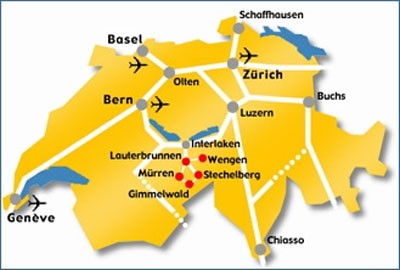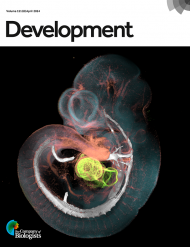Journal of Experimental Biology Symposium 2027
Mechanisms and Adaptive Significance of Cross-Tolerance
Organisers: Craig Franklin, Essie Rodgers and Patricia Schulte
Date: 15-19 March 2027
Location: Hotel Eiger, Mürren, Switzerland
Protective responses play a pivotal role in organismal function, performance and persistence, especially in complex, multi-stressor environments. Traditionally, multiple-stressor studies have focused on the deleterious effects of concurrent stressors, i.e. synergistic interactions, where the sum of the impacts of the individual stressors are greater when combined. However, encountering one stressor can sometimes confer heightened tolerance to a second stressor – a phenomenon known as ‘cross-protection’ or ‘cross-tolerance’ – i.e. an antagonistic interaction, where the impact of the combined stressors is less. This phenomenon has been documented across diverse taxa and habitats, spanning bacteria, fungi, plants and animals. In this symposium, we will explore the mechanistic basis of cross-tolerance in animals and discuss its adaptive significance. Cross-tolerance allows species that are exposed to environmental challenges in complex environments to reproduce and survive, and this may confer some advantage in responding to future climate change. By quantifying the longevity of cross-protection responses and understanding associated costs, we can make robust predictions about species’ resilience in complex environments.
This symposium aims to explore the interplay between multiple stressors (abiotic and biotic), and the underlying mechanisms of cross-tolerance across diverse species and across a range of physiological and molecular processes.
Organisers & speakers
Organisers
Craig Franklin (University of Queensland, Australia)
Essie Rodgers (Murdoch University, Australia)
Patricia Schulte (University of British Columbia, Canada)
Katja Anttila (University of Turku, Finland)
Tamzin Blewett (University of Alberta, Canada)
Luis E. Castañeda (University of Chile, Chile)
Michael Collins (University of Plymouth, UK)
David Costantini (University of Tuscia, Italy)
Gudrun De Boeck (University of Antwerp, Belgium)
Carrie Deans (The University of Alabama in Huntsville, USA)
Wes Dowd (Washington State University, USA)
Nann Fangue (University of California, Davis, USA)
Laura Ferguson (Acadia University, Canada)
Michal Horowitz (The Hebrew University of Jerusalem, Israel)
Heath MacMillan (Carleton University, Canada)
Krystal Maya Maldonado (Cinvestav, Mexico)
Noam Meiri (Agricultural Research Organization, Israel)
Inna Sokolova (University of Rostock, Germany)
Anne Todgham (University of California, Davis, USA)
Manuela Truebano (University of Plymouth, UK)
Programme
The symposium is open to invited speakers and delegates only.
However, all presentations will be published as a special issue of Journal of Experimental Biology in early 2028.
Venue

The Symposium will be held in the Hotel Eiger in the charming Swiss village of Mürren, which is easily accessible by train from international airports at Zürich, Bern, Basel and Geneva. As the highest altitude ski resort in the Bernese Oberland, car-free Mürren is perched on a high terrace facing the famous Eiger, Mönch and Jungfrau mountains.
Hotel Eiger Mürren
Aegerten
3825 Mürren
Switzerland
Tel: +41 33 856 54 54
Fax: +41 33 856 54 56
E-Mail: info@hoteleiger.com
Website: www.hoteleiger.com/en/
Travel
Mürren is 154 km/96 miles from Zürich. Travel time from Zürich airport is approximately 2.5 hours by car and 3.5 hours by train. The resort is 231 km/144 miles from Geneva and 72 km/45 miles from Bern.

Mürren is located in the Bernese Oberland. It is a car-free mountain resort on a rock ledge at 1650 m altitude, reachable either via Lauterbrunnen (cable car and tram) or via Stechelberg (two cable cars).
Public transport in Switzerland is well-known for its reliability and is the easiest way to get to car-free Mürren.
Zürich (ZRH) is the largest airport in Switzerland, with the most scheduled flights. You can also get international flights to Bern (BRN), Basel (MLH) and Geneva (GVA). Zürich and Geneva have good rail connections from within the airport and we advise you to use the rail system to get to Mürren.
If travellling from within Europe please consider using the train for your whole journey. Websites such as Trainline or Rail Europe can help with planning.








You must be logged in to post a comment.